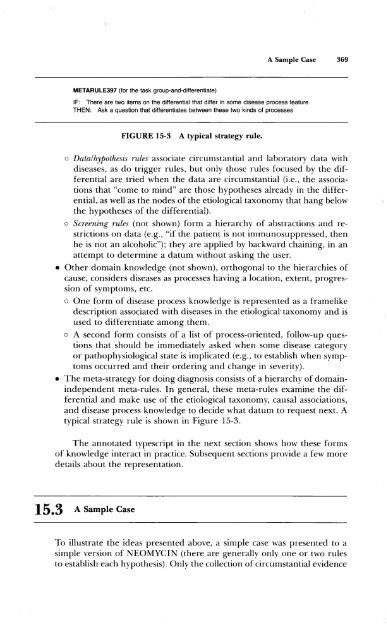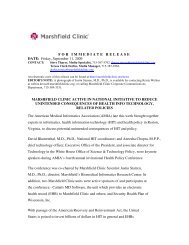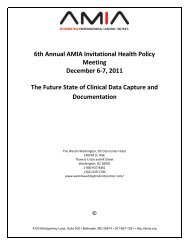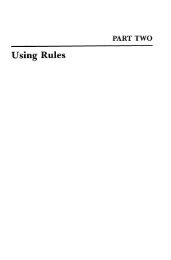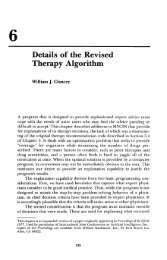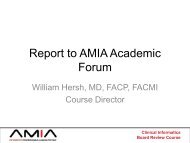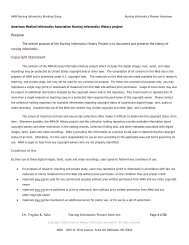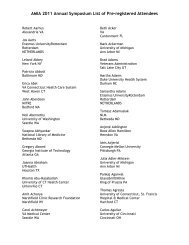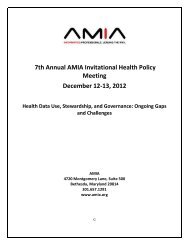Chapter 15 - People
Chapter 15 - People
Chapter 15 - People
You also want an ePaper? Increase the reach of your titles
YUMPU automatically turns print PDFs into web optimized ePapers that Google loves.
A Sample Case 369METARULE397 (for the task group-and-differentiate)IF: There are two items on the differential that differ in some disease process featureTHEN: Ask a question that differentiates between these two kinds of processesFIGURE <strong>15</strong>-3A typical strategy rule.o Data/hypothesis rules associate circumstantial and laboratory data withdiseases, as do trigger rules, but only those rules focused by the differentialare tried when the data are circumstantial (i.e., the associationsthat "come to mind" are those hypotheses already in the differential,as well as the nodes of the etiological taxonomy that hang belowthe hypotheses of the differential).o Screening rules (not shown) form a hierarchy of abstractions and restrictionson data (e.g., "if the patient is not immunosuppressed, thenhe is not an alcoholic"); they are applied by backward chaining, in anattempt to determine a datum without asking the user .• Other domain knowledge (not shown), orthogonal to the hierarchies ofcause, considers diseases as processes having a location, extent, progressionof symptoms, etc.o One form of disease process knowledge is represented as a framelikedescription associated with diseases in the etiological- taxonomy and isused to differentiate among them.o A second form consists of a list of process-oriented, follow-up questionsthat should be immediately asked when some disease categoryor pathophysiological state is implicated (e.g., to establish when symptomsoccurred and their ordering and change in severity) .• The meta-strategy for doing diagnosis consists of a hierarchy of domainindependentmeta-rules. In general, these meta-rules examine the differentialand make use of the etiological taxonomy, causal associations,and disease process knowledge to decide what datum to request next. Atypical strategy rule is shown in Figure <strong>15</strong>-3.The annotated typescript in the next section shows how these formsof knowledge interact in practice. Subsequent sections provide a few moredetails about the representation.<strong>15</strong>.3 A Sample CaseTo illustrate the ideas presented above, a simple case was presented to asimple version of NEOMYCIN (there are generally only one or two rulesto establish each hypothesis). Only the collection of circumstantial evidence


